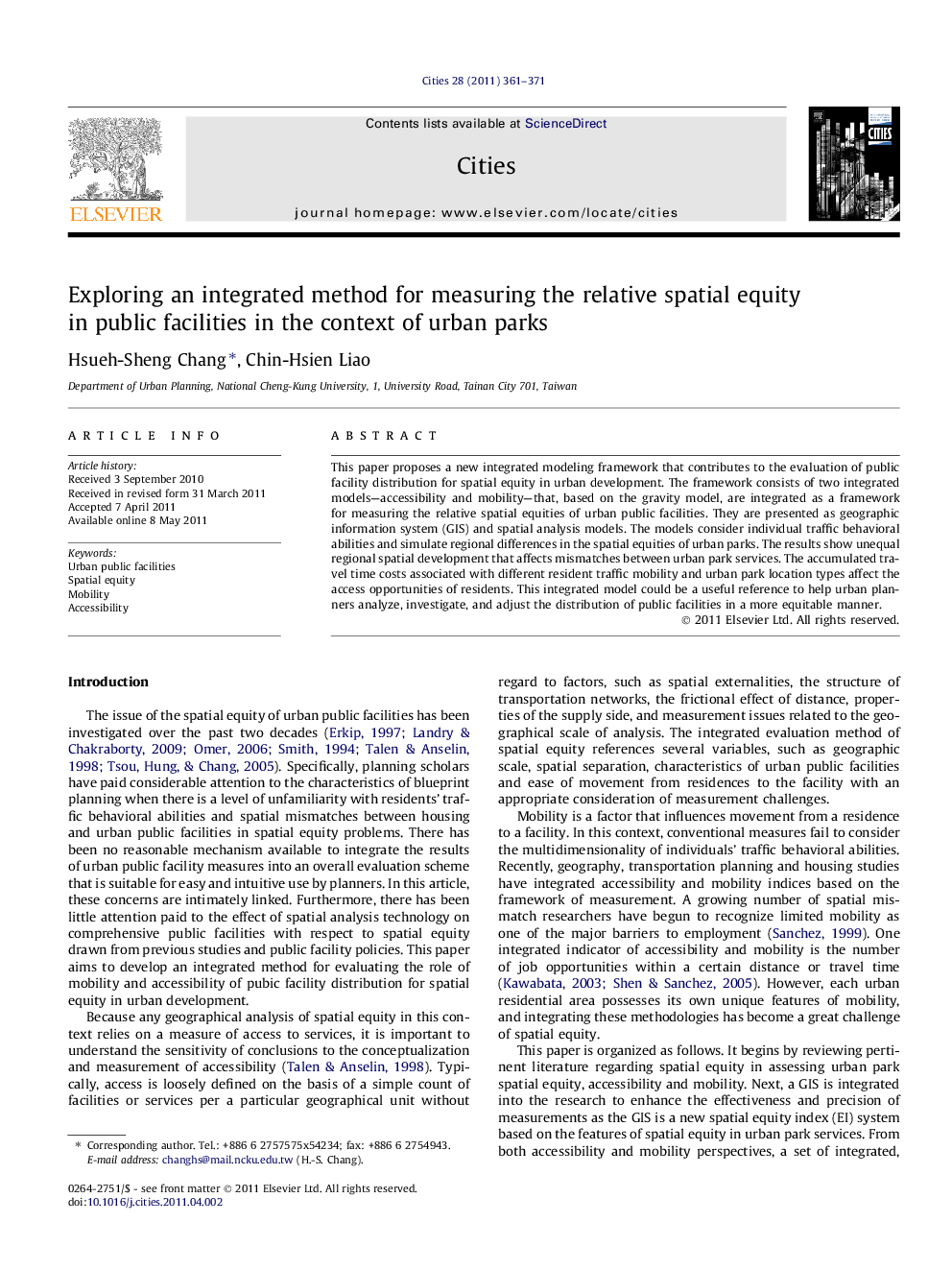| Article ID | Journal | Published Year | Pages | File Type |
|---|---|---|---|---|
| 1008683 | Cities | 2011 | 11 Pages |
This paper proposes a new integrated modeling framework that contributes to the evaluation of public facility distribution for spatial equity in urban development. The framework consists of two integrated models—accessibility and mobility—that, based on the gravity model, are integrated as a framework for measuring the relative spatial equities of urban public facilities. They are presented as geographic information system (GIS) and spatial analysis models. The models consider individual traffic behavioral abilities and simulate regional differences in the spatial equities of urban parks. The results show unequal regional spatial development that affects mismatches between urban park services. The accumulated travel time costs associated with different resident traffic mobility and urban park location types affect the access opportunities of residents. This integrated model could be a useful reference to help urban planners analyze, investigate, and adjust the distribution of public facilities in a more equitable manner.
► This paper shows new integrated modeling simulates regional differences in spatial equities of urban parks. ► The models consider individuals’ traffic behavioral abilities. ► The results show unequal regional spatial developments.
